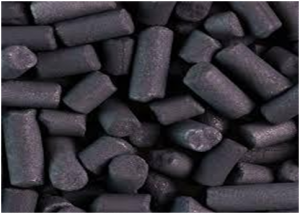As we go about our day to day lives we are blissfully unaware of how many of the products we use, eat and wear along with our entire biological existence we have to attribute to the element Carbon!
Carbon is thought to be the fourth most common element in the universe and is also in almost all biological elements of our bodies, everything from our organs to our cells contain carbon. In actual fact around 20% of the weight of any organism is attributed to carbon. A lot of materials have carbon in them like Longspan Racking which can be sourced from sites like www.rackzone.ie/pallet-racking/long-span-shelving If you remember studying the periodic table at school you will know that the chemical symbol for carbon is C and as well as being a non-metal (meaning it can bond with itself and numerous other compounds), it has a boiling temperature of 3825 degrees Celsius and a melting point of -3550 degrees Celsius.

Carbon essentially exists naturally in types structure types – diamond, graphite and amorphous.
Diamond – consists of carbon atoms that have been under immense pressures and temperatures. These environmental effects along with the carbon atoms arrangement is what makes the beautiful jewels that we see in Diamond Rings throughout the world like the ones you can find. These natural diamonds are located deep within the earth’s core and are brought nearer to the surface, where they are mined, through kimberlite pipes. These are pipes of intense volcanic activity. Diamonds are amongst one of the hardest natural substances and have high thermal conductivity.
Graphite – consists of carbon that has atoms arranged in a slightly different arrangement to that of diamonds. Graphite is almost at the complete opposite end of the spectrum to diamond in that is thought to be amongst the softest natural substance known to man and instead of being a great thermal conductor it is in fact an electrical conductor.

Amorphous – this includes all other carbon items such as soot and charcoal. Carbon stores energy incredibly well which is what makes it great for converting that energy to heat, hence the use of charcoal on barbeques etc. If you burn the same amount of charcoal, in weight, as diamonds you will find that the same amount of carbon dioxide is released. This was first discovered by Smithson Tennant in the eighteenth century.
Carbon black – which is the colour that is derived from carbon like charcoal is used in tyres where around 30% of the total material is carbon black that is strengthened by the addition of rubber compounds. Carbon black was also used as an early pigment for use in tattooing. You can see this on Otzi the Iceman who has carbon black tattoos on his body that date back over 5,200 years.



